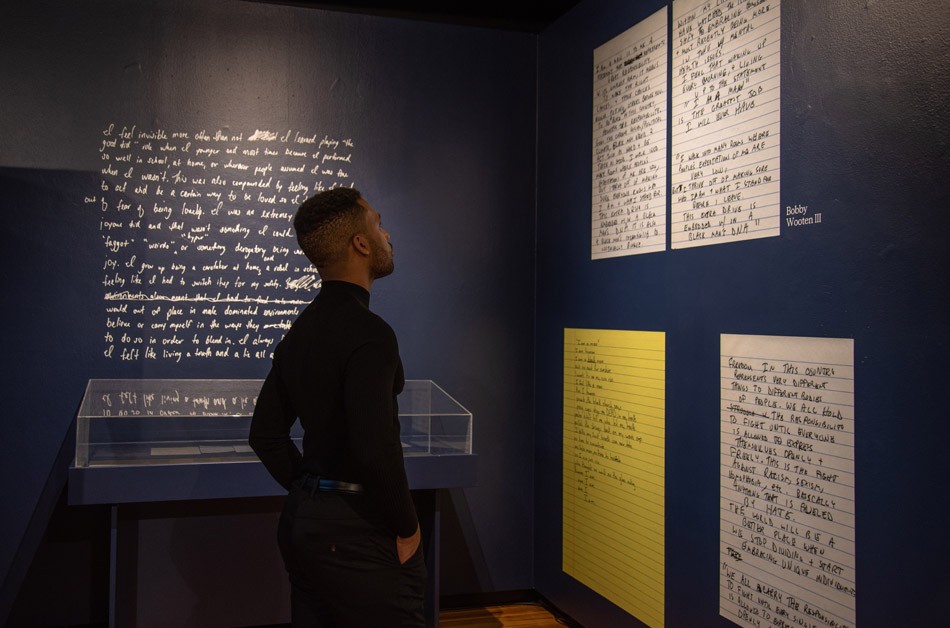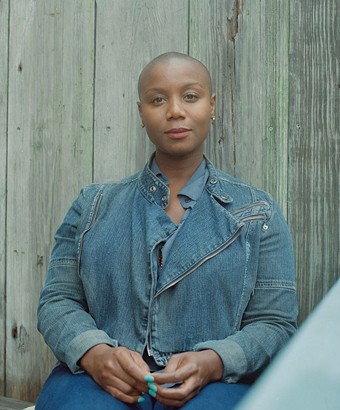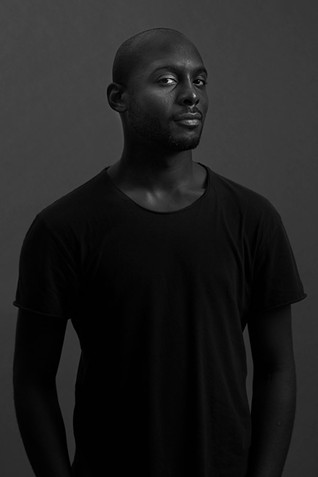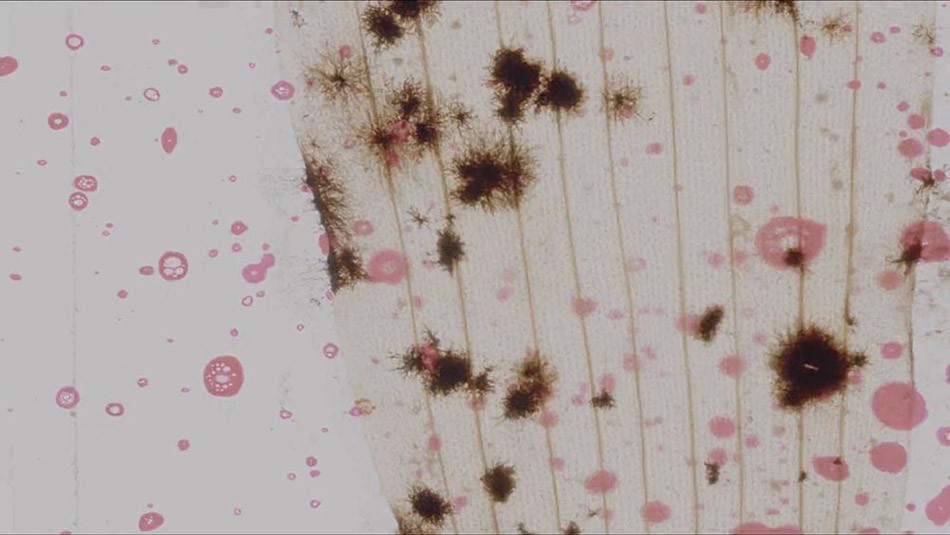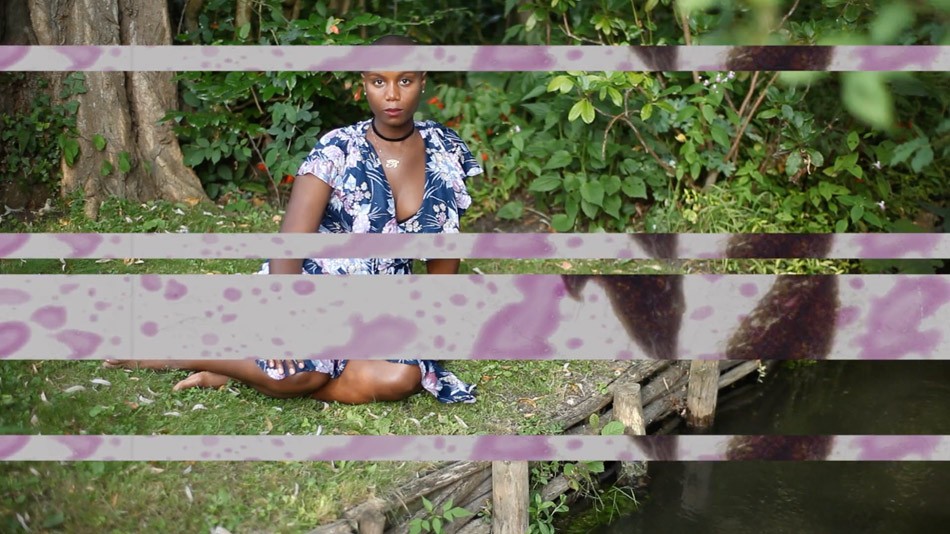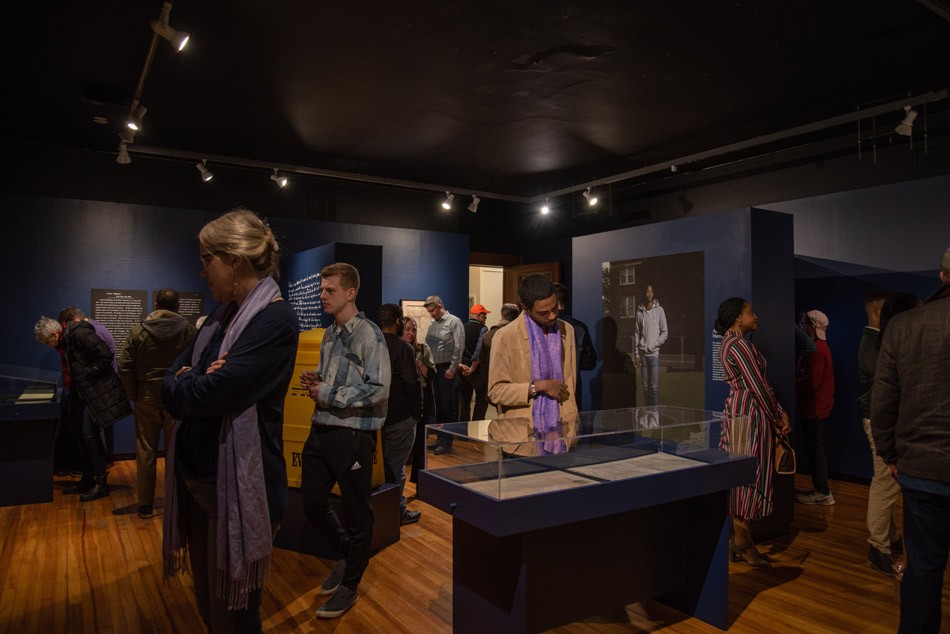The cops pull more than a young black gentleman who lately purchased his initially car or truck. He’s presented no motive and watches helplessly as a police pet dog tears aside his new ride. When the cops and their canine turn up very little, the gentleman is dismissed with an ominous whisper from an officer: “You happen to be blessed.”
That is what the artist and Rochester indigenous Joshua Rashaad McFadden claims occurred to him as a college university student in North Carolina. He recollects how it sparked the discussion with his people that so many black mother and father have with their little ones about how to carry out themselves when confronted by police. Dad instructs him to stand up for himself. Mom advises he be deferential.
“But we all know that there is no unique way to carry out yourself,” McFadden claims. “For the reason that if you appear at Philando Castile or you appear at Sandra Bland — we can go on all working day when there is different eventualities — and people do different factors to consider to de-escalate, but they conclude up lifeless.”
He spoke from Visible Studies Workshop (VSW) on Prince Avenue, exactly where he was setting up his most recent exhibition, “Evidence,” an personal appear at the ideas of black masculinity and independence as they relate to self-expression and representation. The function is on look at by way of June 27.
Frederick Douglass at the time wrote of black people, “It is obvious that we should be our own reps and advocates.” His words reverberate by way of McFadden’s installation and a separate, but complementary, exhibition showing a block away in the Community of the Arts.
At the Memorial Artwork Gallery is a newly-obtained movie installation by climbing artwork-world star Ja’Tovia Gary, titled “Giverny I: Négresse Impériale.” The function, which operates by way of April 5, interrogates the similar ideas of selfhood and basic safety, the internal life and outer realities, professional by black people in The us, but from a feminine point of view.
Precisely, her piece incorporates footage of Diamond Reynolds reacting to the 2016 police taking pictures of her boyfriend, Philando Castile, minutes immediately after it occurred footage of speeches presented by slain Black Panther Celebration member Fred Hampton, and footage of Gary herself getting her footing in the Eden-esque sprawl of Monet’s gardens at Giverny.
With each other, the two artists investigate the subjugating perceptions of black men in distinct, the techniques that black humanity has been suppressed and beneath-represented all over the record of the United States, and the persistent violence and inequity that results from these perceptions and suppressions.
EXCLUSION AND SUPPRESSION
McFadden’s demonstrate is a reaction to this exclusion and suppression — from imperialism to contemporary media’s projections of black men — and the damage that it results in, from bodily endangering black people to psychologically restricting self-expression.
“Evidence” is not just a photography exhibit. It is also a assortment of the tales and reflections of its subjects. Working as an archive of serious people contending with modern day political and social issues, the piece features a handful of substantial-scale portraits of young black men and their handwritten responses to concerns of id, masculinity, race, and sexuality. Also exhibited are original editions of The North Star, the abolitionist newspaper established by Douglass and on financial loan from the Central Library of Rochester and Monroe County. Capping the installation is a newspaper that McFadden developed and will distribute all over town.
Originally from Rochester, McFadden studied at Elizabeth City State College in North Carolina and Savannah School of Artwork and Structure in Ga. He stayed in Ga immediately after earning his diploma, educating and creating his tips and function. He’s been back again in Rochester since August 2019, and is now an assistant professor of photography at Rochester Institute of Technologies.
McFadden’s function is usually connected to destinations of pivotal political and social record for black People in america. Locations like Selma, Birmingham, Montgomery, and Charleston, exactly where the Emmanuel church taking pictures occurred in 2015. “Evidence” is the most recent iteration of a undertaking McFadden has been doing the job on for about six decades.
“It was not right until maybe 2014 that I started out to feel about creating portraits to communicate about social issues,” McFadden claims. “Precisely, police brutality or destructive perceptions of black males in The us, tips of masculinity or poisonous masculinity, and utilizing portraits to screen humanity in the black human being.”
McFadden was residing in Atlanta then. That was the 12 months Michael Brown was fatally shot in Ferguson, Missouri, and demonstrations erupted all over the place. It was also the fiftieth anniversary of the march from Selma to Montgomery. McFadden claims he bought emotionally caught up in the disturbing repetition of young black men currently being killed by police and the ensuing protests, some of which he took portion in as the two a marcher and a photographer.
“Just after that, I started out thinking a lot more about perceptions of black men: why are black men perceived as threats or as thugs, and so forth,” McFadden claims. “So I explained, ‘I will need to do a undertaking about perceptions of black men.’
But he didn’t want to photograph in the streets like he did for his “Just after Selma” image sequence. “I preferred to make it easy,” McFadden claims. “Type of get rid of the chaos and also give electrical power to these participants — in the electrical power of their handwriting — to let them to convey their views and discuss right to the viewer.”
That function became ‘Come to Selfhood,’ a reserve of portraits published in 2016 that paired photos of his subjects with a photo of their father or father-figure at that similar age, along with responses to a study of concerns about male part models and definitions of masculinity.
UTTER HELPLESSNESS
The experience of utter helplessness that McFadden felt through his come upon with the police on that North Carolina street all individuals decades ago is compounded by Ja’Tovia Gary’s movie installation, “Giverny I” at the Memorial Artwork Gallery.
The small function artfully juxtaposes mobile mobile phone footage of the intensely emotional moments immediately after Philando Castile was shot lifeless by a cop along a Minnesota freeway, with footage of Gary amid bouquets and ponds in the relative peace of Giverny.
Notably, Gary’s movie avoids photos of Castile dying and focuses on the horrified reactions of his girlfriend, Diamond Reynolds. Although get over with shock and grief, she stays in manage of herself whilst the officer points his gun into the car or truck and her young daughter sits in the backseat.
Gary’s actions in the bucolic Giverny parallel Reynolds’s experiences on the freeway. When the officer barks “Again up!” Gary quickly retreats into foliage as if she has no proper to peacefully stroll in the solar or recline in the backyard. Though Reynolds incorporates her horror the most effective she can, in Giverny, Gary doubles more than and screams her heart out on Reynolds’s behalf.
Like the evolution of McFadden’s image projects, Gary’s movie is portion of an ongoing “Giverny” sequence of installations, just about every using a appear at black experiences by way of a new prism. In this iteration, she features bits of Fred Hampton speaking about groundbreaking education, alluding to how his empowerment of the black community led to his killing by the FBI in 1969 at age 21, whilst he slept in bed with his girlfriend who was nine-months pregnant.
CLARIFYING CHAOS
In between “Appear to Selfhood” and “Evidence,” McFadden’s archive undertaking has developed from tips about black masculinity as a wide assertion to consist of nuances of how people feel about gender and determine inside of more recent understandings of it.
“With ‘Evidence,’ I didn’t request pointed concerns that you see in ‘Come to Selfhood,'” McFadden claims. “I a lot more so gave the participants two prompts: ‘Freedom’ and ‘I Am A Man’ and they are just responding to what they feel about individuals factors.”
The collaboration with his subjects is effective. Photographed in different eco-friendly and concrete environments or towards a gray backdrop, his subjects manage eye speak to with the viewer and have neutral, calm expressions. The substantial portraits are matched in scale with enlarged reproductions of the handwritten responses, or script reproduced in huge vinyl lettering adhered right to the gallery walls.
Some of his subjects gave examples of definitions of masculinity they experience are imposed on them. Others responded with their own different perceptions of manhood.
“They appear from, of class, who you are right surrounded by,” McFadden claims. “But I have discovered that with a larger appear at it, it truly is from dominant culture, no matter if it be Western or American or white male tips of what masculinity is. And normally, it truly is centered all over violence. And not just bodily violence. That is a huge portion of it, but it truly is also mental and verbal violence. So I have appear to learn that inside of a lot of these participants, these people’s tales, they communicate about their relationship to violence, and how that experienced an effect on them developing up, and how it even now impacts them, and how they tried to immediately either unlearn all of that, or they experience like they cannot escape it. Or they compartmentalize, you know, these different expectations that are put on them.”
McFadden cites “double consciousness” (typically named “code switching”) involving function and house, or house and university, or wherever, for the sake of safely and securely fitting in and navigating the expectations of different communities.
Citing the social controversies that erupted lately encompassing Kobe Bryant’s dying and Dwayne Wade coming out in help of his trans kid, McFadden claims, “It truly is been a chaotic time relating to black males in the media, also dealing with daughters.”
McFadden’s function is a reaction to that chaos. “I like to say that I am creating this function inside of a timeline,” he claims. “Often thinking, ‘Okay, exactly where are we now?'”
The police killings, the protests, the voter suppression, the political and social upheaval in the black community, all of it has been thrust into “Evidence” and seeks to tackle what McFadden calls “this notion of currently being questioned about your knowledge.”
“Did that really take place?” he asks. “How can we go back again and say, ‘We existed in this time, this is what we have been by way of, and this is who I am?'”
“Evidence” also features a community artwork undertaking: the distribution of a newspaper stuffed with McFadden’s photographs and his subjects’ handwritten responses to his prompts. The paper also incorporates essays and prose analyzing black male id the two traditionally and in the current working day, including contributions by historian K. Anthony Jones, Thomas Allen Harris (director of the movie “By a Lens Darkly”), and McFadden himself. The papers will be dispersed all over town at schools, universities, and community and spiritual facilities, in 7 yellow newspaper dispenser containers. The installations consist of a QR code that will direct audience to a lot more details about the undertaking.
Ja’Tovia Gary will go to Rochester to discuss her function in March. Information and facts about this and other similar programming is available at magazine.rochester.edu.
Rebecca Rafferty is CITY’s arts & entertainment editor. She can be arrived at at [email protected].
